
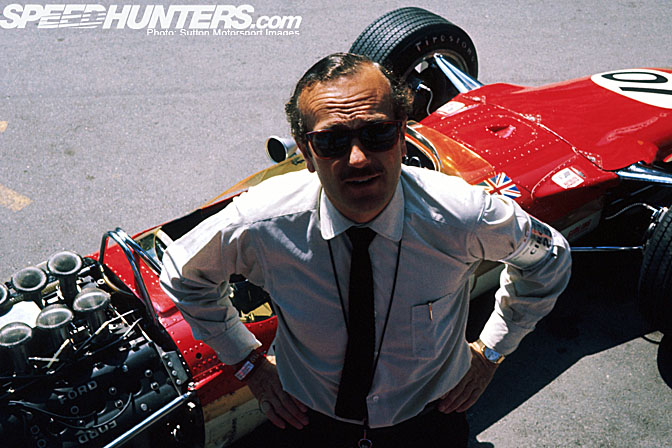
Misfits and Mavericks? Sounds like most of us involved with SpeedHunters……………but it set me thinking and there at the top of the list was a man who died 28 years ago but whose legacy still shapes motorsport today. Anthony Colin Bruce Chapman founded Lotus Cars and ran a motorsport team like no other, a brilliant engineer and innovator, summed up by my old pal, Mike Lawrence in his biography of the man as A Wayward Genius.
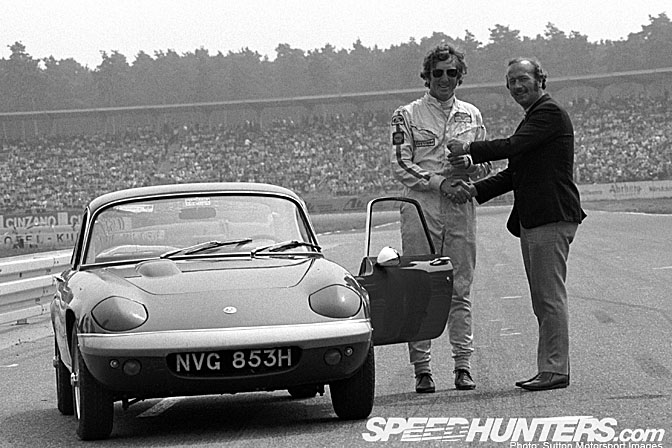
Chapman was an aeronautical engineer by training and used the theories and practice learned in that field to develop the cars that bore the name of Lotus. Team Lotus was one of the most successful outfits in motorsport during the 60s and 70s. They won seven Formula One Constructor's Titles and six Driver's Championships. Lotus Cars still survives to this day producing cutting edge affordable sportscars and is regarded as one of the leading engineering consultancies in the motor industry.
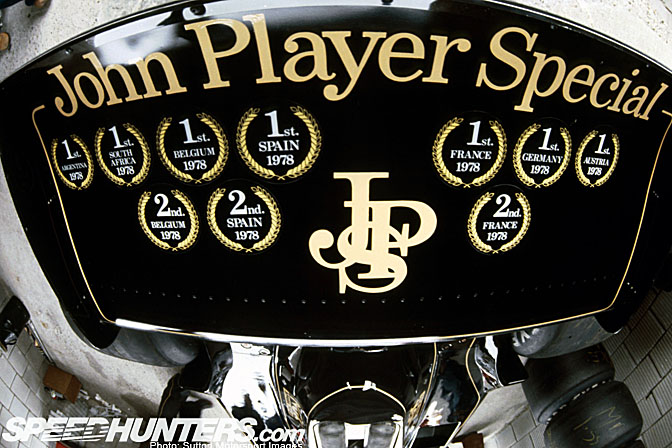
However massive as Chapman's technical legacy was perhaps the most influential innovation was to bring sponsorship into motorsport beginning the process that changed Formula One from rich gentleman's pastime, to multi-million pound high technology enterprise. Gold Leaf Team Lotus was the first team to carry tobacco logos, soon succeeded by a new brand John Player Special.
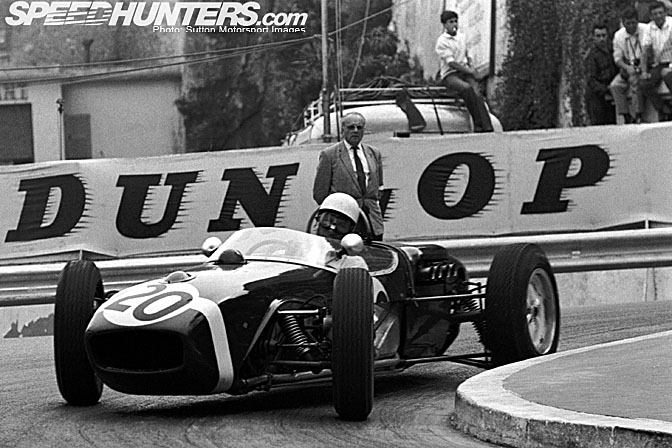
Following the path beaten by John Cooper and Cooper Cars, Colin Chapman created a business selling racing cars as well as the road going variety. Team Lotus ascended the ladder to Formual One and in 1960 Stirling Moss took the marque's first victory by winning the Monaco Grand Prix in the Rob Walker Lotus 18. Moss repeated the feat the following year.
More on England's National Treasure from a past SpeedHunters feature:
http://www.speedhunters.com/?p=3023
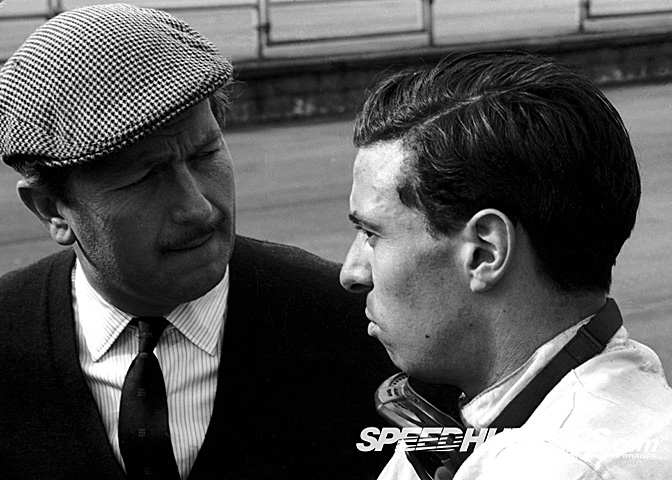
Team Lotus was defined by the partnership that existed between Chapman and Jim Clark. They were like brothers and Jimmy was arguably the greatest driver of them all.
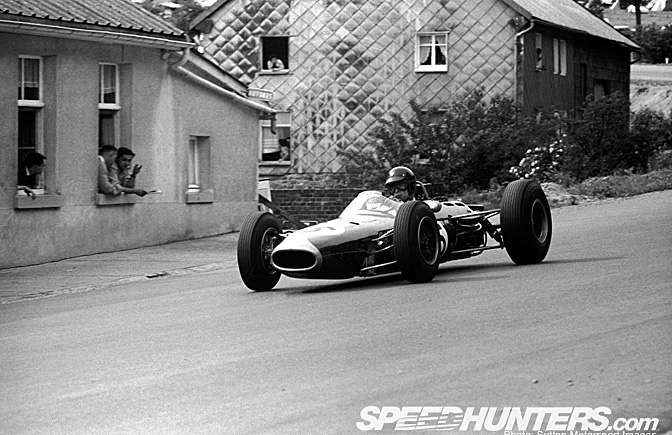
Clark won the Formula One Driver's Championship in 1963 driving the revolutionary Lotus 25. The car was built using a monocoque chassis that then fairly quickly replaced what had been for many decades the standard design formula in racing-cars, the front engined, later mid-engined, tube-frame chassis. Although the material has changed from sheet aluminium to carbon fibre, this remains today the standard technique for building top-level racing cars.

More race wins followed in 1964 but Clark was pipped at the post for the title which went to John Surtees and Ferrari. 1965 saw Clark and Lotus back at the top winning both Formual One titles. Chapman evenfound time to build a car to win the Indianapolis 500 and bring a complete revolution to the racing scene in North America.

In 1966 Chapman persuaded Ford to fund the development of the DFV Cosworth engine that would take Grand Prix racing to a new level.
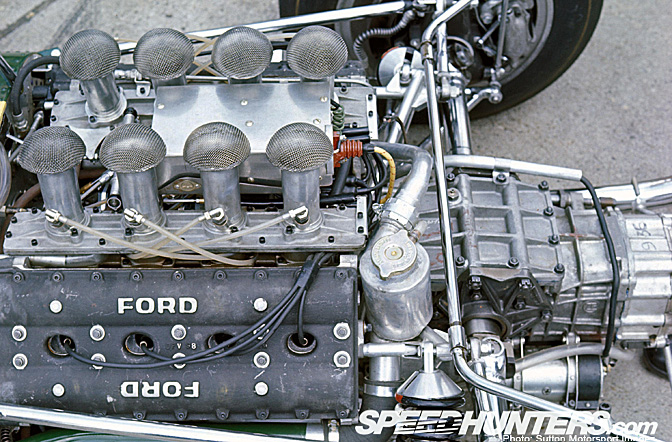
He secured exclusive use of the engine for 1967 in the Lotus 49, which was the first F1 car to feature the engine as a structural member.
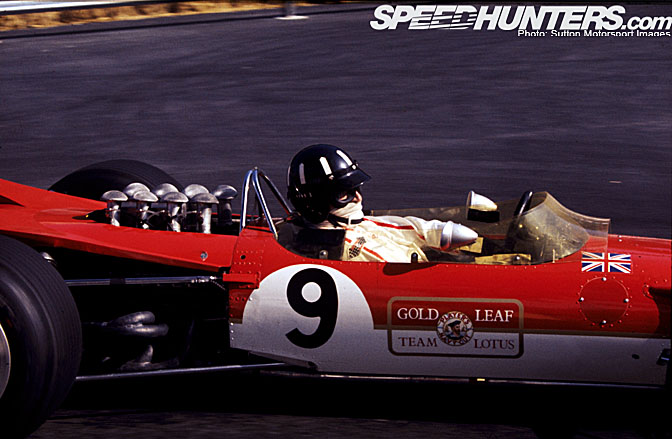
1968 was a year of great change for Lotus, Clark was killed in a minor race in Germany, leaving Chapman inconsolable. Imperial Tobacco had come on board as Formula One's first sponsor with their Gold Leaf brand.
More on the great Jim Clark here:
http://www.speedhunters.com/?p=3029

Graham Hill held Team Lotus together during their darkest hour and using his formidable willpower and underrated skills secured the 1968 titles.

In 1969 Chapman and Lotus signed Jochen Rindt, considered by many to have been the fastest driver of them all.
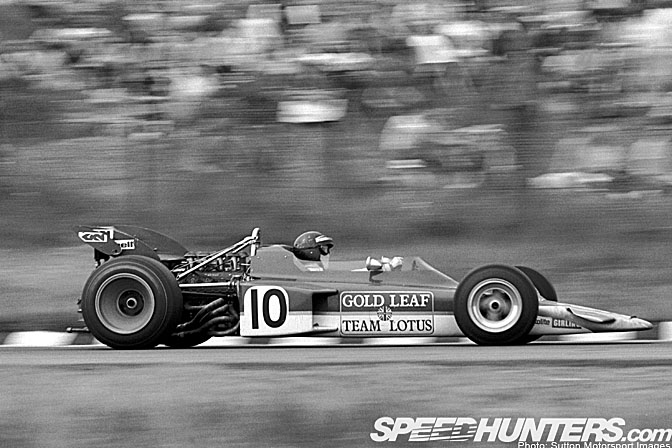
A disappointing 1969 campaign was marred by reliability issues as Lotus went up the blind alley of four wheel drive with the Lotus 63. For 1970 Chapman and Maurice Philippe designed the Lotus 72.
The wedge shape reduced drag significantly and thereby increased speed.
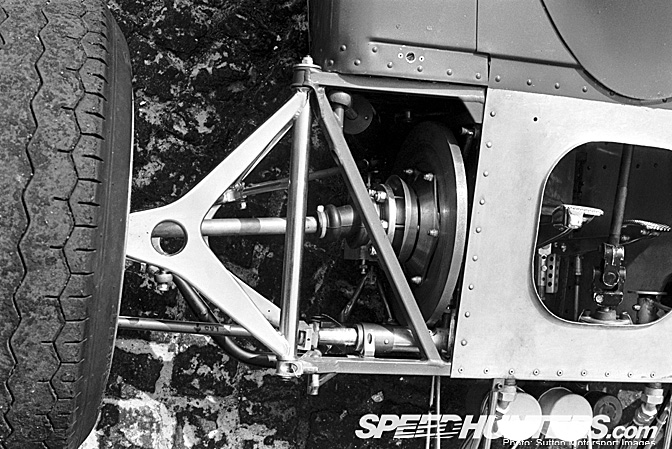
The 72 was yet another innovative design by Chapman featuring inboard brakes, side mounted radiators in sidepods, as opposed to the nose mounted radiators which had been commonplace since the 1950s and an overhead air intake. To begin with however, problems with the handling of the car had to be overcome, due to a lack of 'feel' caused by the anti-dive suspension geometry – which was designed to prevent the nose of the car dipping significantly under braking – and the anti-squat set-up at the rear, which was supposed to stop the car 'squatting down' under acceleration. Once the suspension was modified, there were no further problems.

The combination of Rindt and the Lotus 72 was unstoppable until he was killed during practice for the Italian Grand Prix at Monza. The 1970 title was awarded posthumously to the great Austrian.
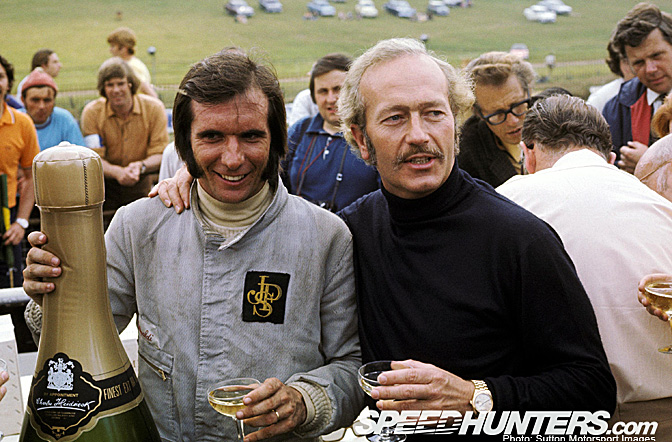
The Lotus 72 was updated, taking Emerson Fittipaldi to the title in 1972.

The Brazilian was joined in 1973 by Ronnie Peterson. One of the most iconic partnership in the history of the sport was born. The sight of "SuperSwede" sideways in the 72 still lives with those who saw it. During that year the pair managed seven victories between them, giving Lotus the Constructor's Title again but Jackie Stewart managed to take the driver's honours.

A couple of lean years passed but then Chapman and Lotus brought their latest innovation to Formula One with the Lotus 78, ground effect. This was to revolutionise motorsport and is perhaps Colin Chapman's biggest legacy to the sport. The underside of the sidepods were shaped as inverted aerofoils. By also shaping the floor of the car in this way the air passing through the gap between the ground and the underside was accelerated, thereby reducing the air pressure under the car relative to that over it. This created a partial vacuum, effectively sucking the vehicle down which forced the tyres harder onto the track. The greater force downwards on the tyres gave more grip and thus higher cornering speeds. It was a quantum leap. But the advance did not pay dividends immediately as the development DFVs failed at five races handing Niki Lauda and Ferrari the World Championship.

The lessons learnt in 1977 were applied to the the Lotus 79, widely regarded as one of the most significant race cars in history.

With Ronnie Peterson rejoining the team headed by Mario Andretti, the pair swept all before them taking seven wins and ten pole positions.
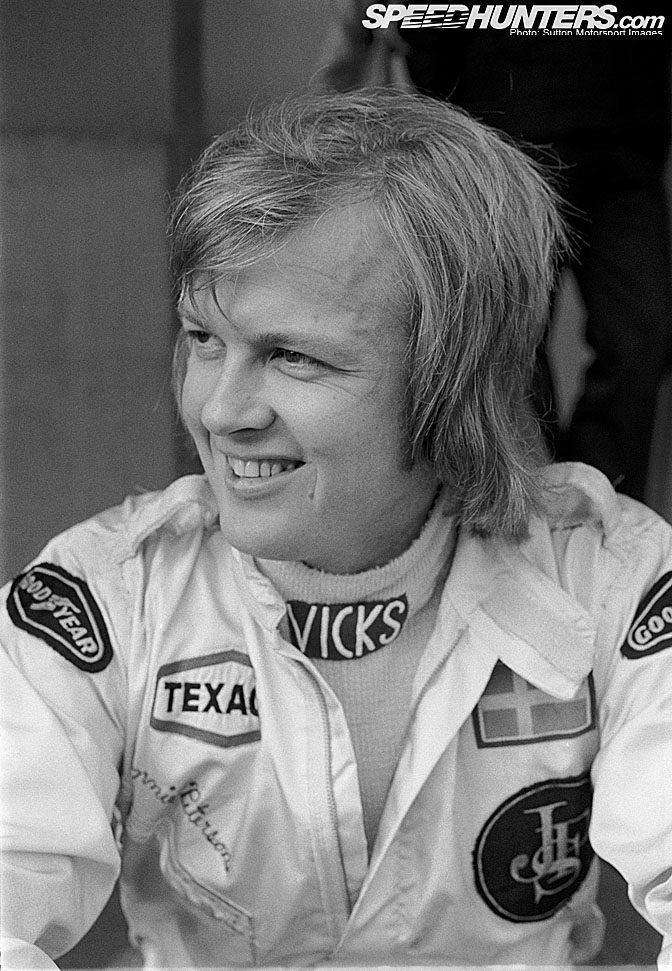
With Andretti poised to clinch the title at Monza tragedy struck as Peterson was killed in a first lap accident.
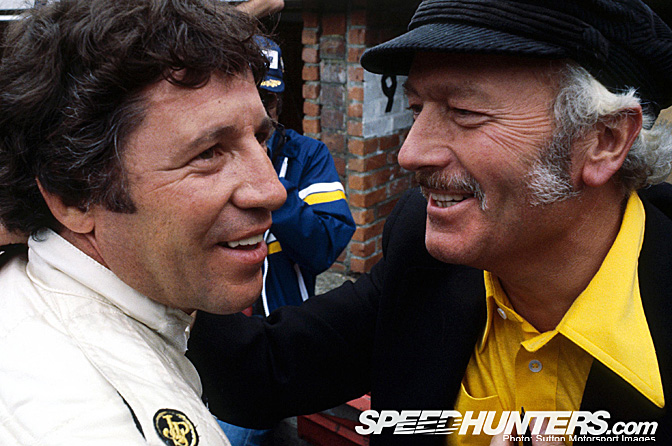
Mario was a worthy Champion, one of the greats of the sport. It was also the high point in Chapman's career.

As if to prove what a dark art the ground effect revolution represented the Lotus 80 which succeeded the 79 was a failure, suffering from porpoising or the ground effect's low pressure area under the car was moving around with the car's centre of gravity. The car was also very sensitive to changes in ride height, the whole affair was very awkward to drive.

In an attempt to slow down the cars on safety grounds the skirts system that had worked so effectively on the Lotus 78 was banned. That prompted a final attempt by Colin Chapman to re-write the design rule book, the Lotus 88. The 88 used an ingenious system of having a twin chassis, one inside the other. The inner chassis would hold the cockpit and would be independently sprung from the outer one, which was designed to take the pressures of the ground effects. The outer chassis did not have discernible wings, and was in effect one huge ground effect system, beginning just behind the nose of the car and extending all the way inside the rear wheels, thereby producing massive amounts of downforce.
To make the aerodynamic loads as manageable as possible, the car was constructed extensively in carbon fibre, making it along with the McLaren MP4/1 the first car to use the material in large quantity, another Chapman innovation.

The other Formula One teams protested the 88 and the FIA ruled against Lotus. The era of making great leaps in design and technology were past and an era of evolution not revolution was upon us.
There were other pressures building up on Chapman. He had became involved with the DeLorean Motor Company's troubled venture to manufacture sports cars in Northern Ireland. The full extent of Chapman's involvement has never been proved, but it is believed he would have been investigated for possible complicity in the manipulation of government loans during the development of the DeLorean car. Fred Bushell, Chapman's colleague and close confidante, pleaded guilty in 1992 to "Conspiring with the late Colin Chapman and others to defraud the DeLorean Motor Company" and was sentenced to four years in prison.
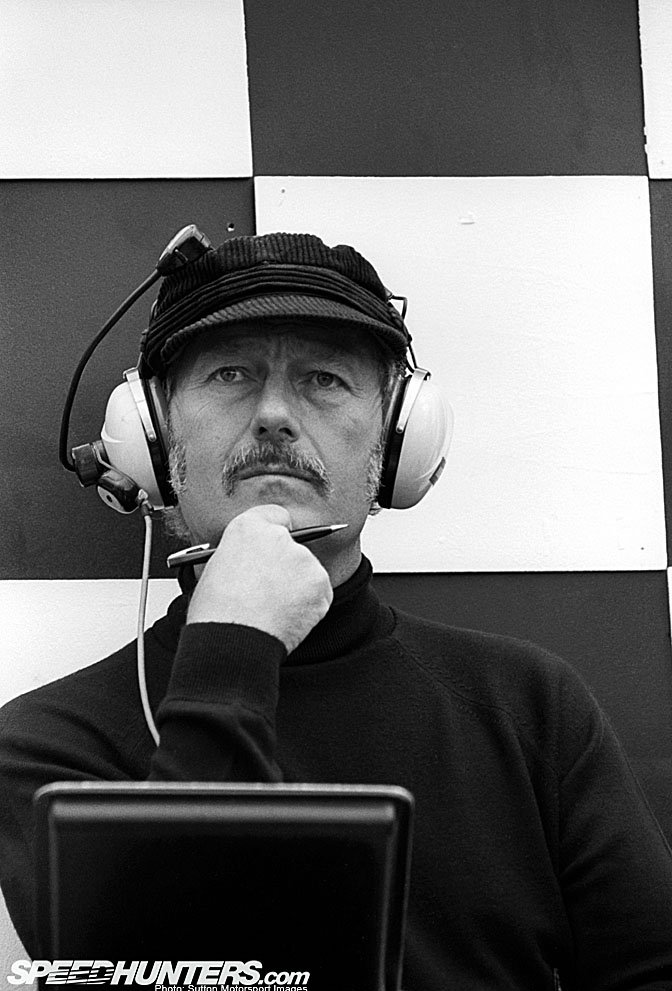
Colin Chapman suffered a heart attack in December 1982 and died. He was just 54 years old.
Chapman was one of the greatest motoring engineers and designers of the past century.
If any man deserved the soubriquet "Maverick" it was surely him.
Photography copyright and courtesy of Sutton Images www.sutton-images.com
John Brooks






R.I.P Colin Chapman. Forever the leader in race car engineering!
Excellent John, probably the truest exponent of outside the box thinking - and then there were his road cars.....
The seventh photography look like the Brands hatch
He surely left the world too soon. Thankfully, he gave us some fantastic cars and a fantastic company in his wake. Great article SH!
Very nice
A mad scientist, for sure. There are more car models on the road that use lotus sourced parts than there are lotus cars.
I love retrospective........ =)
RESPECT
RIP Mr Chapman....
BTW I like Formula 1 very much!
And i like Lotus!
Fantastic article JB! Cheers
Colin Chapman was an amazing man, who left us an amazing legacy of cars... I'm looking forward to owning one of his babies, someday.
Superb article JB! Although the racing was great this year, the 2009+ aero regulations are horrible. In my opinion, the 2008 cars were the best looking cars since the mid 90's.
A true hero and complete genius!
I hope you are planning a follow up article detailing the history of Chapman's road cars John?
Great story, thankyou for another interesting read
"To add speed add lightness"
picture 14, look at the right "button" just beside the other pedals, if this is the clutch pedal(button) ??
(sorry for my english)
otherwise, Chapman is a pur genius ! nothing to say more.
Colin Chapman was not an aeronautical engineer, that was Mike Costin. Chapman was actually a salesman for British Aluminiun.He was working for them when Lotus was formed with 25 pounds borrowed from his girlfriend Hazel .
Genius, Just genius.
if people like Chapman did not succeed ,where would Ecclestone and crew be today.Herald the F1 king and Lotus!
@everyone.............thanks for reading and the comments
@Budinsky.......Brands hatch 1964
@BigJames........road cars? maybe
@Hkn.......your English is fine........not sure about the button.
@Don Denhard.............you are correct Chapman had a degree in Structural Engineering from University College London............and he could sell fridges to Eskimoes.
@RICHARD...........look at my latest post
Thanks for the wonderful article and pictures. Chapman was a brilliant designer who was also smart enough to surround himself with equally brilliant people. That DNA still runs through Lotus to this day. Their road-going cars continue the tradition of engineering innovation.
The story of Colin Chapman and Lotus is an utterly inspiring, and equally tragic one. That he and his company could overcome such tragedies, while continuing to innovate, on and off the road, is incredible! I respect Lotus today because they are one of the few companies that have stuck to their core philosophies in producing their road cars. Plus, I'd love one each of A Lotus Elite (the original one), Elan, and- my personal favorite- a Europa.
I could only imagine if Honda had followed their racing heritage and continued to produce lightweight, innovative sports cars like the S600. Maybe they would be seen as a competitor to Lotus, as opposed to the dull producer of FWD econoboxes, people movers, and hybrids.
Here at SpeedHunters we are in the final stages of Photography Month. There have been many fine posts